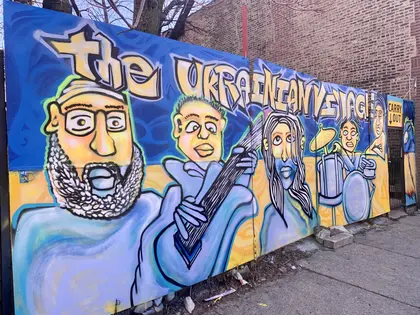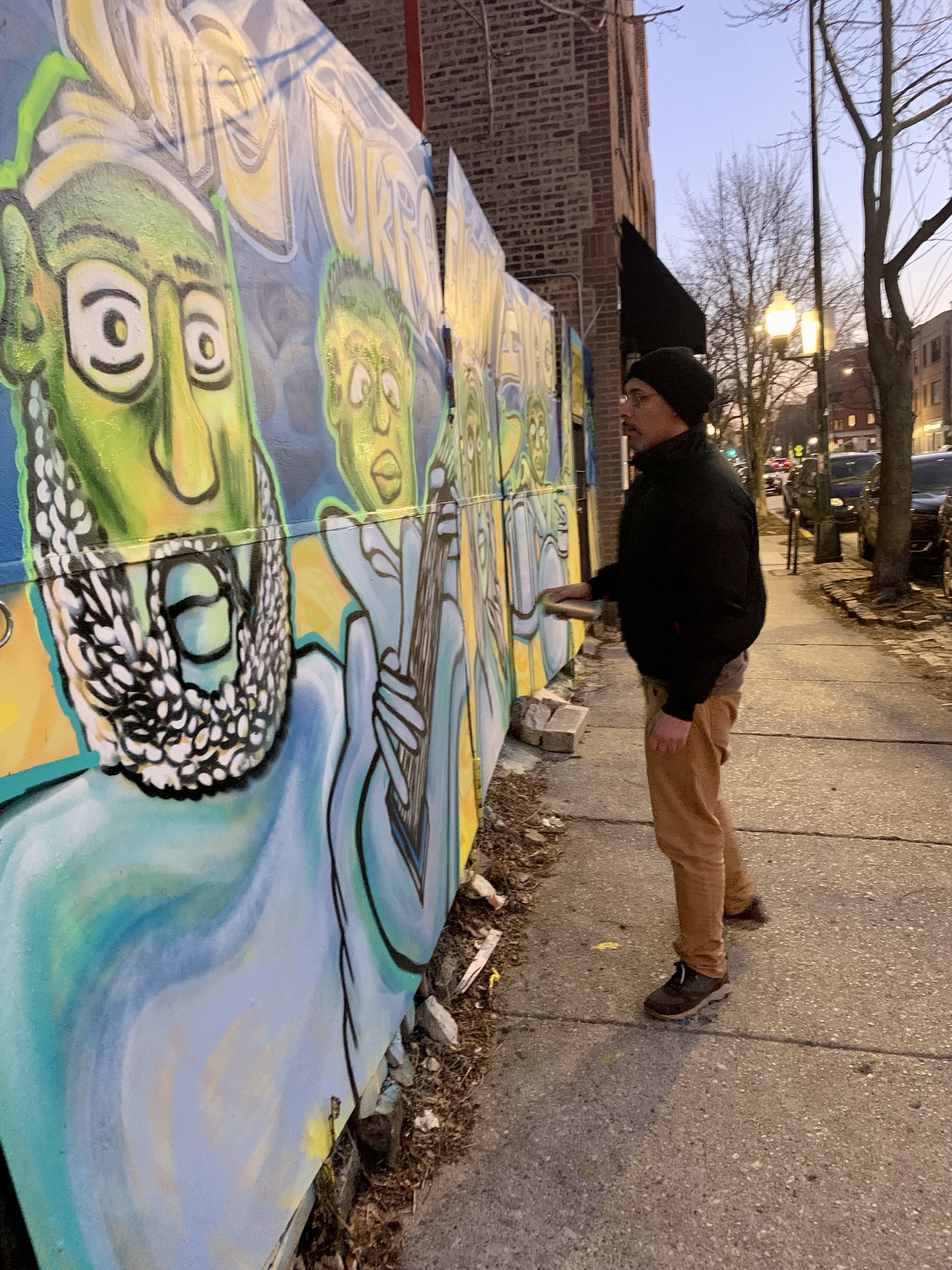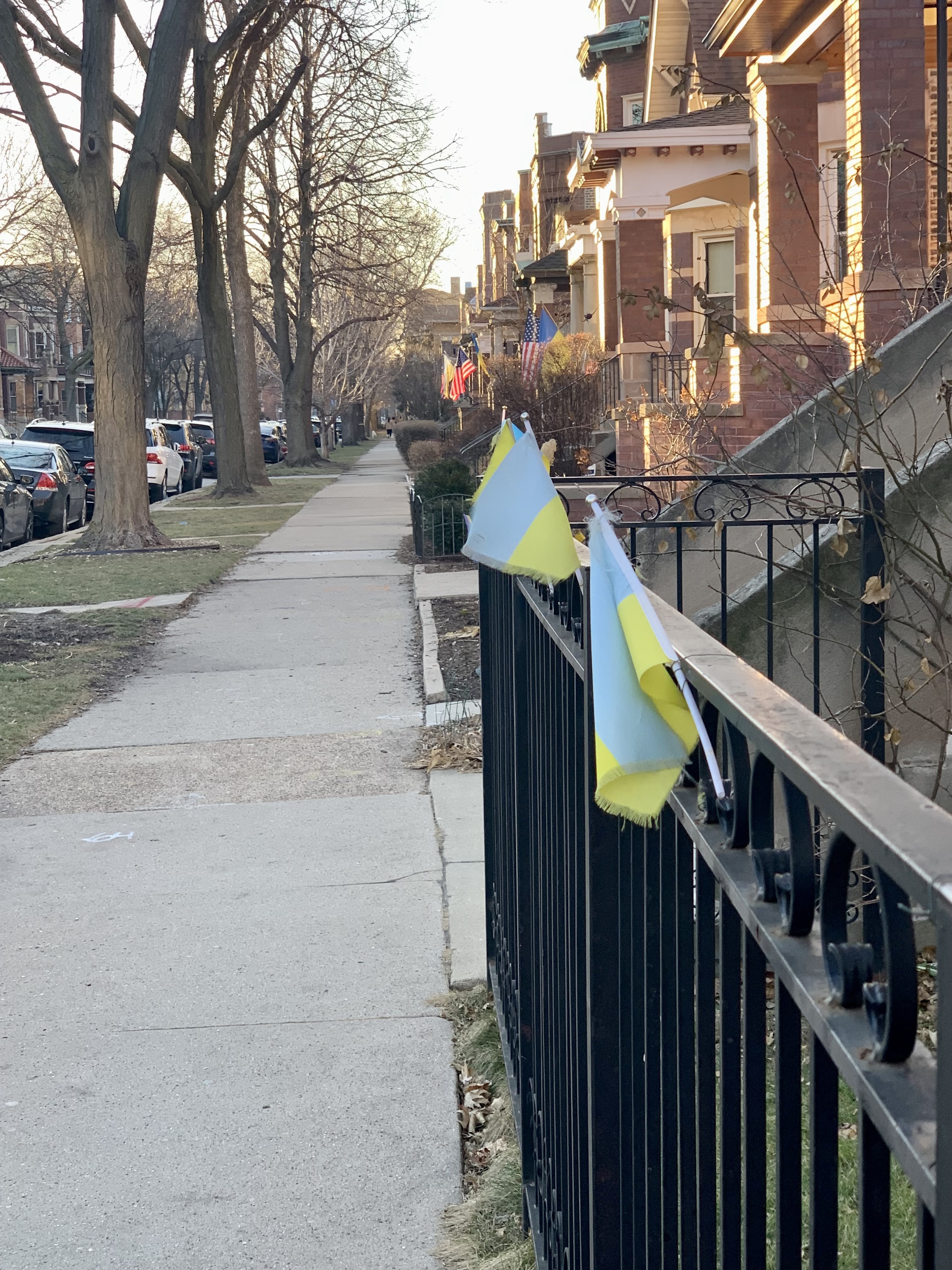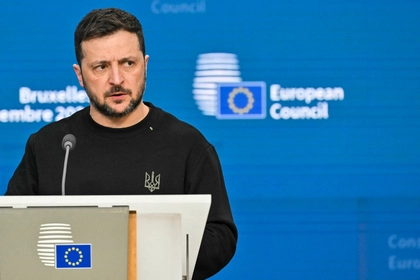It doesn’t take much effort to see the outpouring of support for Ukraine in Chicago, the third-biggest city in the United States.
Blue-and-yellow ribbons hug trees in the close-knit Ukrainian Village neighborhood, host to more than 54,000 people who claim to have Ukrainian ancestry, according to U.S. Census records.
JOIN US ON TELEGRAM
Follow our coverage of the war on the @Kyivpost_official.
U.S. and Ukrainian national flags hang from single-family homes and are strewn on gates in front of yards in what is officially West Town, one of Chicago’s 77 community areas.
Mexican-American public-school teacher and street artist Max Billareal is completing a mural on north Damen Street here to draw attention “to what’s happening on the other side of the world.”
The 40-year-old neighborhood resident said he feels “appreciative to live in the community… the mural is an expression, war is an expression, and violence is an expression,”in reference to Russia’s ongoing aggression toward its former colony.
His appreciation stems from first being exposed to Ukrainian folk music in 2015 at a community college.
“I like it, its communal, it’s not pop music, they don’t try to make money off it, it’s their expression – it’s tribal in a sense,” Billareal said while explaining the depiction of musicians on the mural.

North Korea Slams US Criticism Over Troops in Ukraine, Calls It ‘Reckless Provocation’
He is one of many non-Ukrainians across the U.S. and world who express their support in multi-faceted ways as the one-year mark of Russia’s full-scale invasion nears on Feb. 24.
“I wouldn’t say we are all soldiers, but that we are all fighting for peace,” Billareal said.
Someone who also couldn’t stand aside is Jeff Kaminsky, who worked in the medical field as a manufacturer.
“How could this be happening in the year 2022?” he told the Kyiv Post of the grisliest war on the European continent since World War II. “It’s a simple story of good versus evil.”
Twelve days into the massive onslaught, Kaminsky, also a trained first responder from the Chicago suburb of Northbrook, flew to Berlin and helped evacuate 400 orphans from the Black Sea port city of Odesa.
He paid out-of-pocket to rent hotel rooms for women and children, and for the elderly before scaling up and realizing he needed to register as a non-profit organization to accept more and more donations. He would also find Russian-speaking doctors to help communicate with asylum-seekers requiring medical attention.
Kaminsky’s Project Aid and Rescue has teamed with other non-Ukrainian groups, such as White Stork in Illinois, to provide NATO-standard medical kits that have “over 50 components in them, including life-saving tourniquets and chest wound bandages,” he said.
Over time, he has been involved in $30 million worth of collective aid projects with other like-minded groups and hosts a Ukrainian refugee family consisting of a mother and her 17-year-old daughter.
The Jewish-American remains modest, saying, “I’m a small guy who runs a small organization.”
As billions of dollars of weapons are supplied to Ukraine from NATO countries, the combined efforts of individuals continue to blaze a path ahead as well.
Yale University history professor Timothy Snyder recently raised more than $1.2 million to purchase additional so-called drone hunters to help protect Ukrainian skies from the Iranian-manufactured Shahed kamikaze drones that Russia has been using.
Ukrainian Minister of Digital Transformation announced the fundraising effort on the Telegram social media platform on Feb. 11.
Oscar-winning film director Michel Hazanavicius, a member of the United 24 fundraising platform as is Snyder, handed over $134,000 for the reconstruction of a hospital in the city of Izyum through a charity auction.
Of Jewish descent, his grandmother was born in Kovel, which is in Ukraine’s Volyn Oblast, and his paternal grandfather was born in Lithuania.
Even celebrity chefs have used their culinary talents to feed those fleeing the war’s carnage in and outside of Ukraine.
Massachusetts native Rachael Ray has partnered with the Ukrainian Congress Committee of America (UCCA) – the largest and oldest umbrella advocacy group for Ukrainians in the U.S. – has assisted with distributing $100,000 worth of Individual First Aid Kits (IFACs).
She also took part in providing $50,000 worth of medical supplies, art tools and instruments to the Saint Nicholas Children’s Hospital in Lviv.
She and the UCCA established a kitchen at the St. John Bosco Youth Educational Center in Lviv to nourish displaced people.
“The main goal is to keep the war in the headlines and humanize this,” Ray told The Ukrainian Weekly in July. “It’s a moral imperative to protect democracy.”
Through Washington-based chef Jose Andres’s World Central Kitchen (WCK), relief for families affected by war has come via field kitchens close to the front line and even in Poland where a plurality of Ukrainians have fled.
When Russian missiles struck residential areas and other non-military targets in the southern city of Dnipro in January, WCK was there to provide hot food.
“As the situation keeps evolving, WCK will continue to help in the best way we know how, with a freshly prepared plate of food,” the group’s website states in regard to its Ukrainian outreach project.
You can also highlight the text and press Ctrl + Enter








